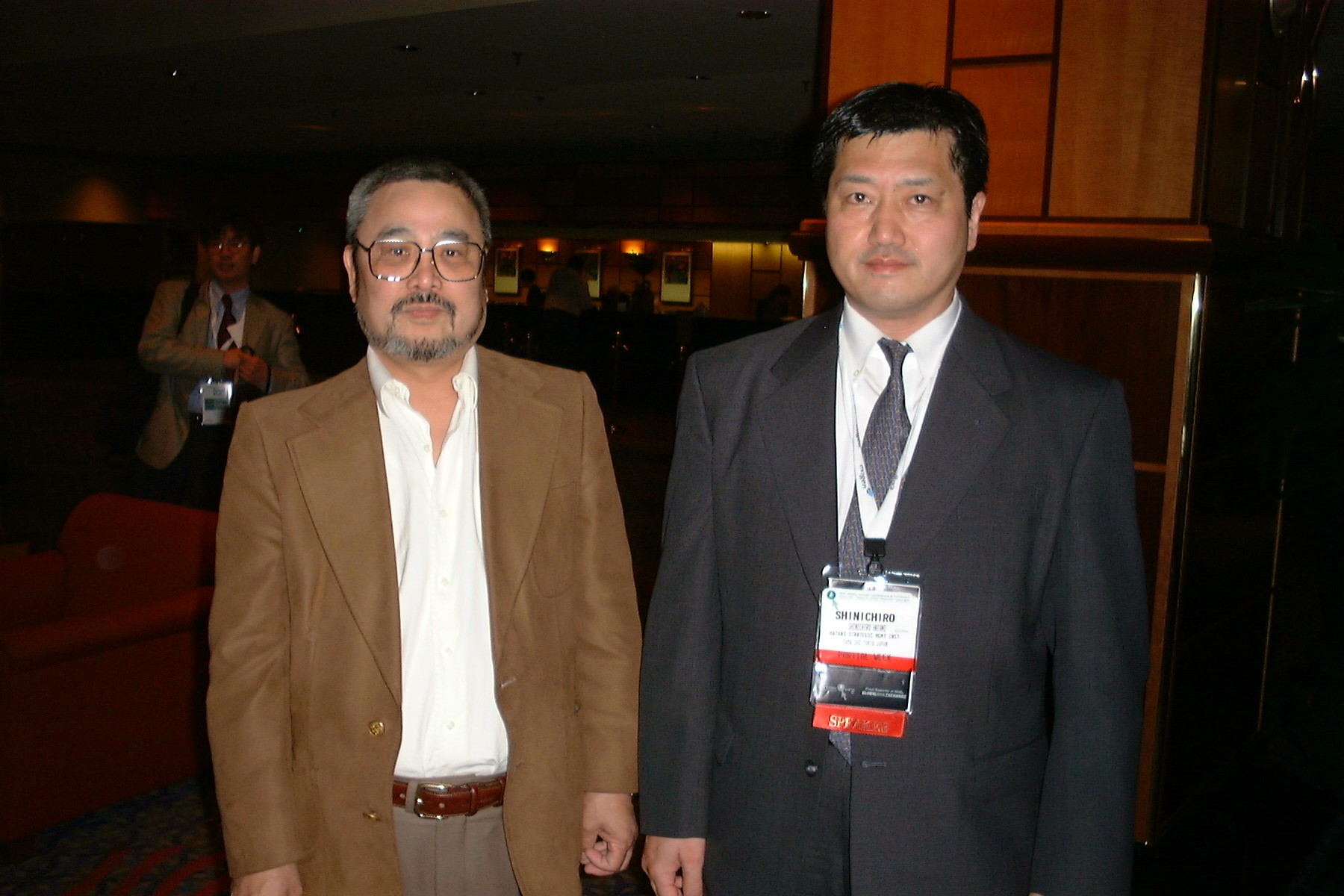リスク対応策 2020.02.09
RM 7 RIMS(リムズ)のキャプティブ講座 RIMS Captive Course
For those who prefer to read this column in English, the Japanese text is followed by a British English translation, so please scroll down to the bottom of the Japanese text.
今から20年程前。1999年4月10日、成田を発った飛行機は、ロサンゼルス空港に着いた。朝から晩まで「グローバル企業のキャプティブの設立と運営管理」に没頭、「もっとキャプティブ設立のメリットを出せる再保険の組み方はできないか」と日々考えていた米国フィラデルフィアの地を離れて、実に3年ぶりの米国であった。国内線に乗り換え、「さあダラスへ」、日の沈む頃、すでに夏が到来した、むせ返るようなダラス・フォートワース空港に降り立った。

1.テキサス州ダラス
目的は、翌4月11日より1週間開かれる、通称「リムズ」、米国のリスクマネジメント団体、RIMS (リスク・保険管理者協会:Risk and Insurance Management Society, Inc.) 第37回年次総会に参加するためであった。
経営コンサルティング先であった、大手財閥系生命保険会社が設立した損害保険会社、その商品開発にかかわるヒントを探しに、また業務協力・業務提携候補先の調査と交渉のための出張であった。ダラスでのRIMS(リムズ)を皮切りに、以前の勤務先、外資系保険会社関係者との面談のためにニューヨークへ、キャプティブの設立コンサルティングも事業領域にする調査のためバミューダへ、最後の目的地は英国ロンドン、後に長くお世話になることになる、大手総合商社の保険ブローカー、そして大手欧州系・豪州系損害保険会社との面談、交渉のためであった。全行程、実に4週間の世界1周の出張であった。
2.RIMS(リムズ)
企業が内包する、また遭遇する様々なリスクに対処してその指揮を執る専門職の名称が「リスクマネージャー」である。RIMS(リムズ)の年次総会は、リスクマネージャー、保険・リスクマネジメントの関係者が集まる、まさに「年に一度の祭典」であり、また情報交換の場、学習の場でもある。巨大なダラス・コンベンション・センターは、先端のリスクマネジメントの現場を一目見て学ぼうと、世界各国から集まった10,000人を超える人々の熱気で溢れかえっていた。
年次総会は、2つの柱で構成されていた。新たな顧客獲得の機会を狙う、保険、再保険、リスクマネジメント・サービス、キャプティブ、これらに関係する900ほどのブース(展示会)。もう1つが、研修のために開催される、200あまりのセッション(講座)であった。
久し振りのRIMS(リムズ)であった。「この3年でずいぶん変わったな、やけに再保険会社のブースが多いな・・、ああキャプティブが増えたからか」、そう思いつつ自分のセッション(講座)会場へと急いだ。
3.キャプティブ
「このなかで、キャプティブ(自社専用保険会社)を持っている人は?」、講師の声が広い室内に響いた。200人あまりの参加者の大半の手が挙がる。「リスクマネジメントの最終ゴールのように言われているキャプティブを持っているのに、今更この人達は何を学びに来ているのだろう」と思った。
「そうか」と、「キャプティブは、造ったらそれでゴールではないという事実」を間近に見た思いであった。造った以上、キャプティブ設立のメリットをより追求していくのが、受講者、リスクマネージャーの仕事、責務。それで彼らの評価が決まる、プロフェッショナルの専門職が、「リスクマネージャー」だからである。
現在、全世界に7000あまりあると言われているキャプティブ、それらのほとんどは、保険とは縁もゆかりも無い会社が所有している。「損保が生保、生保が損保、同じ保険業界で子会社を創っても、黒字化、また発生してくる様々な課題に必死になって対処していかなければならない、まして、異業種では、大変である、だからか・・」、そう思いながら講師と参加者の質疑応答を聞いていた。
ふと、講師の応答が「経営コンサルタント」のように感じて、資料に記してあった彼の部門名を見ると、「Risk Solution Division(リスクソリューション部)」とあった。1週間後、ダラスを離れる際、東京へダンボール1箱の資料を送った。その年、1999年10月、日本で初めてその名称を冠した部門が、筆者の経営コンサルティング先の損害保険会社で産声を上げた。
現在、グローバル・リンクの執行役員、菅原伸雄がその部門長であった。優秀な女性職員2人がロイズのシンジケート(引受保険会社)でトレーニングを受け、帰国後作成した彼らの名刺の肩書きには「アンダーライター」と記されていた。本場でトレーニングを受けた彼らは、当時の損害保険業界に大きな影響を与え、後に彼らの力によって大手損保を遙かに優越する成績をあげる類い希な部門に成長した、そのきっかけを得たのがこのRIMSであった。
ふと、「それにしても、RIMS(リムズ)の講師は大変そうだ。その道のプロ中のプロを相手に、当然だが英語でプレゼンした上に、山ほどの質問を受ける、どおりで日本人が講師をやったことは無いと聞くはずだ」と思った。よもや、自分がその2年後、アトランタの地で開かれた「第39回RIMS(リムズ)年次総会で講師を引き受けることになる」とは思いもせずに、次の目的地ニューヨークへ発った。

(第39回RIMS(リムズ)年次総会(於:米国アトランタ):「講師」の赤いタグを胸に)
(39th RIMS (RIMS) Annual Meeting in Atlanta, USA: with the red tag “Lecturer” on my chest)
本来、ソリューション(解)は、経営コンサルタントが使う用語である。企業経営における様々な経営課題に対してコンサルティングを依頼した場合、「戦略代替案」としていくつかの戦略が提案される。この一連の流れを「ソリューション(解)を出す」と言う。
「保険の中にもリスクがある、また保険付保によって、かえって新たにリスクが発生してくる可能性はないか」とさえ考える、「リスク処理の一手法を明確に経営戦略上の重要課題に変貌させた進化型リスクマネジメントの概念」が誕生していたのである。
グローバル・リンクのリスクマネジメント、キャプティブ、それぞれのコンサルティングはこのコンセプトにしたがって開発されたものである。
4.リスクマネージャー
2020年は、1995年1月17日の「阪神大震災」から25年、東日本大震災から9年目を迎える年である。それらの大災害では、被災者の頑張り、また様々なボランティアの方々の活躍に比べて、「縦割り行政」の不備が露呈、救援活動の遅れ等が指摘された。その理由として専門家に指摘されていたのが、「リスク、損害に対応する専門職、『リスクマネージャー』の存在がなかったこと」である。
阪神大震災のちょうど1年前の同じ日、1994年1月17日「米国の歴史上最も被害金額の大きな自然災害」と言われたロスアンゼルス地震が起きた。このとき活躍したのは、「米国政府のリスクマネージャー」といわれるFEMA(Federal Emergency Management Agency:連邦危機管理庁)であった。
大規模災害発生時には、「米国の国土・国民やその財産を守る」という共通目的の下、このFEMAが中心となって連邦省庁、自治体、NPOをはじめとする民間組織などあらゆる関係者と協力体制を築き、準備や対応にあたる。
欧米と日本の企業を比較すると、大きな違いは、この「リスクマネージャー」が欧米の企業においては存在することであり、この「企業経営上のリスクを一元管理するスタッフ・部門」が、日本のほとんどの企業には存在していないことである。
阪神大震災の2ヵ月後、1995年3月20日フィラデルフィアから日本への出張で午後成田に着いた。その私を迎えていたのは、「地下鉄サリン事件」であった、自宅に帰るのに普通は2時間の道のり、それに8時間要したのを記憶している。
今回のまとめ
かつて、「日本は世界で一番安全な国」と呼ばれ、リスクを感じながら生活することは一般の人々にとってはほとんどなかったが、1995年を境に人々も企業も大きな変化の波を受け始めた。「リスクマネージャー」がどんな組織においても求められる時代が到来したと言えよう。
地下鉄サリン事件から25年、果たして日本の企業にリスクに適格に対応できる部署があり、人材が育ってきているのであろうか、その目的のために進んできた企業とそうでない企業との差が非常に大きく開いているのを感じている。「まさか」の時に、また「想定外のできごと」という言葉を発しなくていいようにすべき時を、地下鉄サリン事件から四半世紀経過した本年は迎えているのではないだろうか。
執筆・翻訳者:羽谷 信一郎
English Translation
Risk Management 7 – RIMS (RIMS) Captive Course
About 20 years ago on April 10, 1999, I arrived at Los Angeles after departing Narita Airport. It had been three years since I had left the U.S., where I had been immersed from morning to night in the establishment and operation management of a global corporate captive and wondered if there was a way to structure a reinsurance policy that would provide more benefits for the establishment of the captive. I transferred to a domestic flight and landed at the sweltering Dallas-Fort Worth Airport at sunset, with summer already in full swing.
1. Dallas, Texas
The purpose of my trip was to attend the 37th Annual Meeting of the Risk and Insurance Management Society, Inc. (RIMS), commonly known as RIMS, a risk management organization in the U.S., to be held for a week beginning April 11.
A non-life insurance company established by a major conglomerate life insurance company, for which we were commissioned to provide management consulting services, and to search for hints on product development, as well as to investigate and negotiate with potential business partners.
Starting at RIMS in Dallas, I went to New York to meet with my friends from a foreign insurance company as my previous employer and, then to Bermuda to conduct research on the establishment of a captive, which would include consulting services, and finally to London, England to meet and negotiate with an insurance broker, a subsidiary of a major general trading company, and a major European and Australian non-life insurance company, who have given me great help later for me to develop various insurance products. The entire trip was a four-week round-the-world trip.
2. RIMS
The term “risk manager” is used to describe the professionals who lead the company in dealing with the various risks it involves or encounters. The RIMS Annual Meeting is truly an annual gathering of risk managers, insurance and risk management professionals, as well as a forum for information exchange and learning. The massive Dallas Convention Center was filled with more than 10,000 people from around the world eager to see and learn about cutting-edge risk management practices at a glance.
The annual meeting consisted of two pillars. Some 900 booths (exhibitions) related to insurance, reinsurance, risk management services, captives, and related topics, targeting new customer acquisition opportunities. There were also some 200 or so sessions (courses) held for training purposes.
It had been a while since I’ve been to RIMS. I’ve seen a lot of reinsurance companies’ booths in the last three years… I wonder if “that’s because the number of captives has increased,” I thought as I hurried to my session (or course).
3. Captives
“Who here has a captive (their own private insurance company)?” , the instructor’s voice echoed in the large room, and the majority of the 200 or so participants’ hands went up. I wondered, “What are these people coming to learn now that they have a captive, which is said to be the ultimate goal of risk management?”
I thought to myself, “Well, that’s not the goal of captives once they’re built.” After building the captive, it is the job and responsibility of the participants and risk managers to pursue the merits of the captive’s establishment. This is because risk managers are professional whose reputation depends on it.
Most of the 7,000 or so captives in the world today are owned by companies that have no connection to insurance. “Even if a non-life insurance company creates a subsidiary in the same industry, a non-life insurance company creates a life insurance company, they still have to turn a profit and cope with the various problems that arise, much more so in a different industry, and that’s why”, I was listening to the Q&A session between the lecturer and the participants.
The lecturer’s response sounded like a “management consultant,” so I looked at the name of his department in the handout and saw that it was the “Risk Solution Division. A week later, when I left Dallas, I sent a box of materials to Tokyo.
That same year, in October 1999, the first division in Japan to bear that name was born at the non-life insurance company where I was doing management consulting.
The division was headed by Nobuo Sugawara, now an executive officer at Global Link. Two outstanding female employees received training at a Lloyd’s of London syndicate (an underwriting company), and their titles on their business cards, which they prepared after returning to Japan, read “Underwriter”.
Trained in “the Home of Insurance”, they had a huge impact on the property and casualty insurance industry at the time. Later on, the division grew into an exceptional division that outperformed major P&C insurance companies by far. It was RIMS that gave the opportunity to do so.I
I was suddenly struck by the fact that the instructors at RIMS must be very hard to work for. I thought to myself, “Of course, they have to present in English to the best professionals in the field, and they are asked a lot of questions, and they must have never had a Japanese person as a lecturer before. “I left for my next destination, New York, not expecting that I would be a lecturer at the 39th Annual Meeting of RIMS (RIMS) held two years later in Atlanta.
Originally, the term “solution” is used by management consultants. When we ask for consulting services for various management issues in corporate management, several strategies are proposed as “strategic alternatives”. This sequence of events is called “coming up with solutions.”
It is thought that ”there are risks in insurance, and insurance coverage may in fact give rise to new risks.”This was the birth of an evolving concept of risk management that clearly transformed a risk management method into an important management strategy issue.
Global Link’s risk management and captive consulting services have been developed in accordance with this concept.
4. Risk Manager
The year 2020 will mark 25 years since the Great Hanshin Earthquake of January 17, 1995, and nine years since the Great East Japan Earthquake. In contrast to the efforts of the victims and the various volunteers who worked tirelessly to save the lives of the victims, these disasters exposed the inadequacies of the “interministerial rivalry” and the delays in relief efforts. One of the reasons for this, pointed out by experts, was “the lack of a ‘risk manager’ as a specialist to deal with risks and damages.
On January 17, 1994, just one year before the Great Hanshin Earthquake, the Los Angeles earthquake struck, which has been described as “the most costly natural disaster in the history of the United States”. The Federal Emergency Management Agency (FEMA), the “risk manager of the U.S. government,” took an active role in this disaster.
In the event of a major disaster, FEMA takes the lead in preparing for and responding to the event by building a cooperative structure with all parties involved, including federal departments, agencies, local governments, NPOs, and other private organizations, with the common goal of protecting the land, people, and property of the United States.
A major difference between Western and Japanese companies is the existence of risk managers in Western companies, while most Japanese companies do not have such a centralized staff/department for managing business risks.
On March 20, 1995, two months after the Great Hanshin Earthquake, I arrived at Narita in the afternoon from Philadelphia on a business trip to Japan. I was greeted by the Sarin gas attack on the subway, which I remember taking eight hours to get home, compared to the two hours it would normally take.
Summary of this time
Japan was once known as the safest country in the world, and the average person rarely lived with a sense of risk, but after 1995, both people and companies began to experience a wave of change. It could be said that the time has come for risk managers to be sought after by all organizations.
Twenty-five years after the Sarin gas attack on the Tokyo subway, I wonder whether Japanese companies have departments and personnel capable of responding to risk in a competent manner, and I sense that the gap between the companies that have made progress toward this goal and those that have not is widening significantly. This year, a quarter of a century after the sarin subway incident, we may be entering a time when we should no longer have to say “no way” or “unexpected” when the “unexpected” happens.
Author/translator: Shinichiro Hatani

